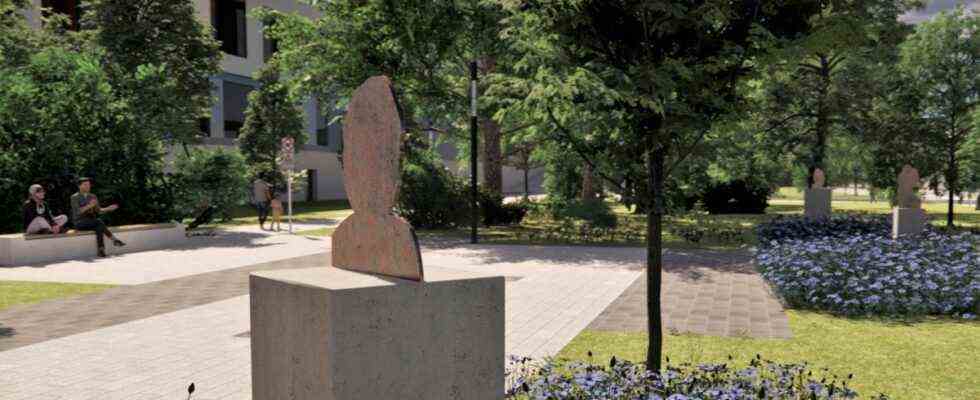How difficult it can be to create an appropriate place of remembrance can currently be seen using the example of the city of Unterschleißheim. As early as 2013, the municipality took the decision in principle to remember those people, especially women, who had to do forced labor for the Nazi regime as prisoners of war or for ideological reasons in the Lohhof flax roast.
In 2017, the concept for the multi-part memorial path that was to begin at Lohhofer Bahnhof was approved. Now there are some indications that the project could fail completely. The reason: During the preparation, it was overlooked that a central piece of land is privately owned – and that the owner only wants to allow use on a temporary basis.
With the inclusion of the commute that Jewish forced laborers from Munich had to walk from the Lohhof train station to Flachsröste every day, the area around the train station was to become a central memorial. According to the plan, a memorial is to be built on the side path to the technical college; along the work route to Carl-von-Linde- and Siemensstraße, steles with historical portraits are to commemorate the enslaved people and their sufferings. Finally, a dwell location is provided at the actual location, which is intended to provide additional specific information on the flax roasting.
The website for the “Place of Remembrance Flachsröste Lohhof” presents the planned memorial for the forced laborers in detail. But the ambitious memorial project of the city of Unterschleißheim will probably never be implemented. The mishap in the preparation of the project, when the ownership of the centrally necessary plot of land had been overlooked, ruined the previous concept. An attempt will now be made with the designers of the memorial to rebuild the project without its centerpiece.
The memorial path was to begin on a plot of land at the old Lohhofer train station; The district office has already released the parcel at the technical college owned by the district.
Prisoners of war and, above all, many female forced laborers toiled in the flax roasting facility during the Nazi era.
(Photo: SZ-Photo)
It was only possible to negotiate a license agreement with the investor – for an unlimited period and at a favorable rent
The second part of the concept is the route that most female forced laborers had to cover in the 1930s from the train station to roast flax. The aim of the memorial path should be a historical place of learning, on the corner of Carl-von Linde- and Johann-Kotschwara-Straße on the parcel of the former forced labor, with visual contact to the old place and the historical location of the roasting.
But it is precisely this parcel that is privately owned, which nobody noticed in the run-up to the planning. When the city presented its project, a building application for a conference hotel had already been submitted to the district administration. The application was withdrawn by the investor – and so the city tried to get the necessary piece of land.
The only thing that could be negotiated was a license agreement, open-ended and at a low rent – but with a catch: the owner only insisted on a twelve-month notice period in order to remain flexible for his own plans. At the moment he has nothing in the quiver, it said from the city administration, “but that can change”. Although they had discussed including the memorial in the later planning, this was only “a declaration of intent, but by no means a promise”.
That is too vague for the city council. How do you deal with the memorial on a day X if it has to be cleared, was the question in the meeting on Thursday evening in the culture committee. What would that mean for the continued existence of the other parts of the memorial? And how would the city be if it had to demolish a memorial? The committee unanimously rejected the draft contract with the landowner. The cultural office is now to clarify a revision with the historian Maximilian Strnad, who developed the historical basis for the project, and the artist Kirsten Zeitz, who provided the design for the three-part memorial. The aim should be to convey comparable content at two locations or to create a completely new concept
In July 2019, the city presented a design by the Munich artist as the basis for the memorial. In particular at the Lohhofer FOS / BOS, various project work has already been carried out. With the memorial, the city wanted to bow to the forced laborers in the Lohhofer Flachsröste – and finally give the 500 exploited women and men a face. Now everything seems to have started again.

